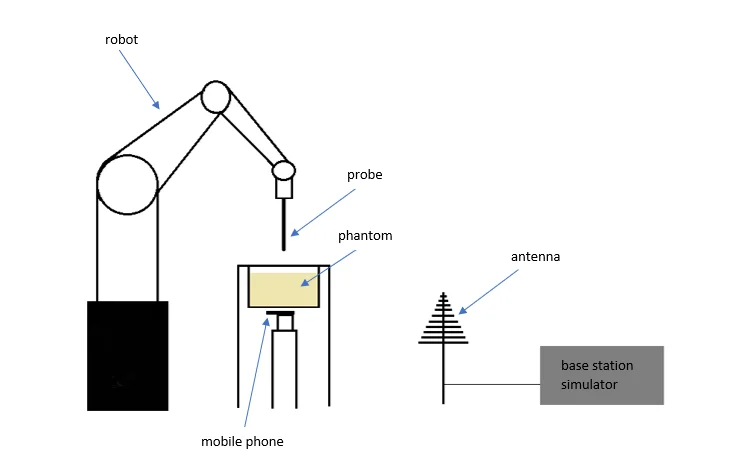Specific Absorption Test (SAR Testing)
1. What is SAR?
SAR- Specific Absorption Rate, is defined the rate of electromagnetic waves absorbed by the human body when exposed to radio frequency (RF) electromagnetic fields per unit of time.
SAR is a near-field measurement and is typically averaged over the entire body or over a small sample volume (usually 1g or 10g of tissue).
SAR testing must be done on all wireless devices that have radiating parts closer than 20 cm to the human body or head.
The measurement unit of SAR is: W/kg.
2. Why is it so important to test SAR?
Specific Absorption Rate testing needs to be done to make sure that the product’s safety and compliance requirements are met. Different countries have introduced standards that limit the amount of RF exposure allowed from a variety of wireless devices.

In Vietnam, Ministry of Information and Communication (MIC) is planning to release the regulation for SAR limit in the frequency range from 4 Mhz to 10 Mhz according to the table below:

Ministry of Information and Communication (MIC) will release QCVN 134:2024/BTTTT – National technical regulation on Specific Absorbtion Rates for Mobile Phone, will take effect on 01 July, 2025.
Therefore, from July, 2025, imported and domestically produced mobile phone must meet the regulations in QCVN 134:2024/BTTTT before selling to the market.
3. SAR testing equipment for mobile phone
Specific absorption rate testing equipment uses standardized models of the human head and body. These models are then filled with liquids that simulate the RF absorption characteristics of human tissue.

(Sources: Verkotan)
The basic SAR testing system:
– Robotics system
– Robot controller
– Computer
– Near-field probe
– Probe alignment sensor
– Phantom containing the tissue-equivalent material.
4. SAR testing processing:
– The systems checking
– Conducted power measuring
– Evaluation process & measurements
– Exposure from multiple sources simultaneously
– SAR test report
References:
[1] IEC 62209-1528:2020 Measurement procedure for the assessment of specific absorption rate of human exposure to radio frequency fields from hand-held and body-worn wireless communication devices – Human models, instrumentation and procedures (Frequency range of 4 MHz to 10 GHz).
[2] TCVN 3718-1:2005 “Safety management of radio frequency radiation – Part 1: Maximum exposure levels in the frequency range 3 kHz to 300 GHz”.
[3] https://verkotan.com/2020/specific-absorption-rate-sar-testing-process-5-things-for-companies-to-consider/
[4] https://www.intertek.com.hk/electrical/sar/




